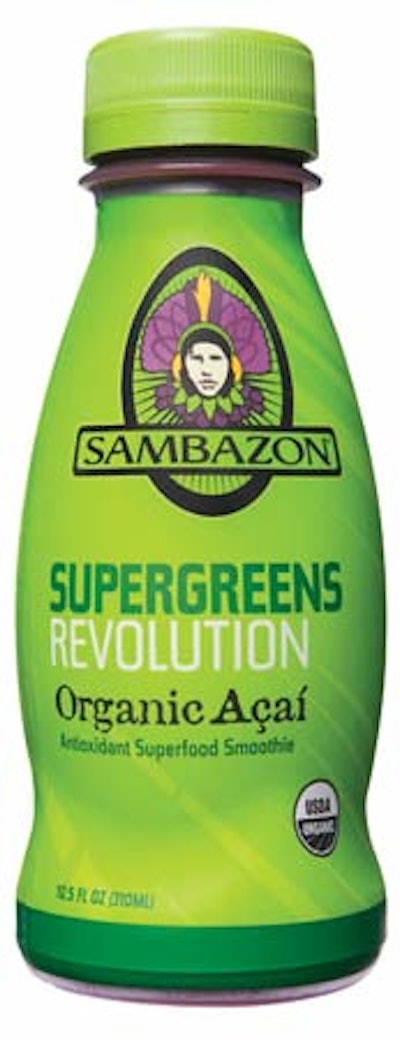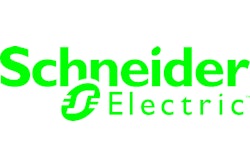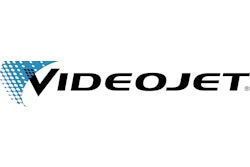Convinced that the U.S. marketplace is ready for much broader acceptance of rigid plastic containers filled aseptically, Aseptic Solutions of Corona, CA, has built an impressive contract manufacturing and packaging facility to meet this anticipated demand. Why contract, as opposed to own-brand, manufacturing?
“Because we’ve heard from enough well-known brand owners who want an alternative to the brick pack for aseptic packaging of low-acid products,” says director of quality J. Scott Murin. What these brand owners don’t want, however, is the hassle of getting from the U.S. Food and Drug Administration the letter of non-objection they need (see sidebar) before they can market low-acid beverages packed aseptically in rigid plastic containers sterilized by paracetic acid.
Aseptic Solutions plans to work with customers from recipe to lab-scale tests to small market-test batches right on up to large-scale commercial production. To meet its objectives, it has installed a complete aseptic line, the Unibloc 2, from Procomac (www.procomac.com). Container sterilization, rinsing, filling, and induction sealing of aluminum foil to the filled containers is all done in a microbiological isolator chamber at a rated speed of about 450 bottles/min. Anything from 6- to 32-oz containers can be filled.
“We heard good reports about the Procomac system,” says Murrin when asked why Procomac was selected as the key vendor in the installation. “They are much less expensive than one of the other rotary aseptic equipment suppliers we could have chosen. And although they are well known in many parts of the world, they were looking for a U.S. beach head for low-acid aseptic filling right about the time we were getting serious about installing a system. So they are helping in a number of technical areas and are continuing to help us with all the FDA issues that surround this launch.”
On the day Packaging World visited, Samba, Inc., the leading global marketer of the Amazon fruit acai, was having its 10.5-oz smoothies (above) filled on the line. Samba’s Richard Aust, vice president of technology, says that this product is susceptible to flavor degradation if bacteria is allowed to remain in the caps or containers.
“Because Aseptic Solutions flash pasteurizes the product and sterilizes the bottles and caps, there’s no microbiological load to worry about,” says Aust. “Filling on this system lets us ship refrigerated product nationwide and guarantee that stores will have 40 days to sell it.” Sold primarily through health food stores and the Whole Foods chain of supermarkets, the individual bottles sell for about $2.50 each.
Containers come from Graham Packaging (www.grahampackaging.com). Coextrusion blow molded, they consist of high-density polyethylene/tie layer/regrind HDPE/ethylene vinyl alcohol/tie/virgin HDPE. Customized neck finish dimensions make the bottle suitable for the Procomac bottle-handling tools.
Filling the hopper
Production begins with an operator who uses a fork lift to dump bottles into a hopper that leads to a Procomac orienter. Once oriented, bottles are air-conveyed to the enclosed and overpressured room where aseptic filling takes place.
Inside this enclosed room is a glass and stainless-steel isolator cabinet that holds the sterilizer, rinser, filler, and induction sealer. The only access to this equipment while production is underway is through glove ports. Above is an air-handling system with HEPA filtration that ensures a positive pressure is always maintained inside, thus providing a contamination-free environment.
As air-conveyed bottles reach the isolator cabinet, they are suspended single-file by the necks and pushed forward by jets of paracetic acid. They’re handed off to the Gripstar GX rotary sterilization block, a 135-station rotary system that inverts the bottles and sprays the insides with paracetic acid. According to Murrin, a bit of custom engineering makes the sterilization system especially reliable.
“When we first embarked on this, we needed to know for sure that the sterilant was flowing into the bottle from each neck,” says Murrin. “So Procomac created the Smart Sensor, which uses a pressure transducer to give you a binary feedback: on or off. If for any reason the nozzle isn’t activated, that bottle will be marked for automatic rejection.
“But we wanted to go beyond that, to know not only if the flow is on or off, but also the pattern and pressure of the flow of paracetic acid. So Procomac designed the pressure transducer in such a way that it maps out the pattern of the spray emerging from each nozzle. If this pattern falls outside predetermined parameters, the system comes to a controlled stop until corrective measures can be taken.”
As bottles near their discharge from the sterilizing block, they are returned to their upright position. A starwheel handoff takes them to the next block in the enclosed isolator chamber: a 90-nozzle Gripstar GX rinser. Outsides of bottles are sprayed with sterile water. The rinser then inverts each bottle, the rinsing nozzle enters the bottle, and sterile heated water is sprayed to thoroughly rinse the inside of each bottle. Bottles are turned right side up and another starwheel exchange sends them to the next block, a 70-nozzle Fillstar filler.
Filled bottles pass through yet another starwheel exchange to enter the next-to-the-last block in the isolator chamber, a 15-head Euro/PK rotary capper built by Arol (www.arol.com). A frequent partner with Procomac on aseptic installations, Arol relied on servo technology from Elau (www.elau.com) in building this capper. Each capping station has its own Elau SCL-055 servo motor/drive. Because they integrate drive and motor in a single unit, the SCL-055s overcome space restrictions as well as the complexity of connecting stationary drives to motors that are mounted on a rapidly moving rotating platform. Servo technology also minimizes the number of mechanical components and bottle guides, thus reducing the opportunity for microbial growth and contamination. That’s welcome in any installation, but its huge in an aseptic installation.
The servo motor/drives are part of Elau’s PacDrive control system, which governs both logic and motion on the machine. Arol’s Massimo Annaratone appreciates the use of what he refers to as “mechatronic” technology in place of spindles, gears, and other mechanical parts.
“Not only can you control capping torque much more efficiently, you have instant data constantly telling you how each individual capping station is performing,” says Annaratone. That makes troubleshooting so much easier, he adds.
Closures get the treatment
Closures applied by the Arol machine have foil liners in place that are induction sealed by a Lepel (www.lepel.com) machine just before bottles exit the isolator chamber. Closures also get special treatment that’s in keeping with the stringent requirements essential in aseptic packaging. Before they leave the supplier’s plant, they’re bagged and sent to an outside party for irradiation so that the bio load is minimized.
“When the bags reach us,” says Murrin, “the 2ꯠ or so caps inside are sterile, but the outside of the bag is not. So we hang eight bags in a chamber beside the isolator chamber and sterilize the outside of the bags with hydrogen peroxide. This process takes about 20 minutes. Then, using the gloved intervention ports, an operator opens a tear feature on one bag after another and pours the caps into a hopper that takes them into the isolator chamber and ultimately into a capping head.”
Among the cap suppliers Aseptic Solutions relies on is Portola (www.portpack.com). “They’ve been helpful in bringing us the lift and peel feature we want,” says Murrin. “They also helped in the overall engineering behind the sterilization system we use for the large bags in which the closures are delivered.”
Samba’s Aust specifies a Portola 38-mm DBJ-L closure compression molded of HDPE. Inside is a lift-and-peel foil membrane that gets induction sealed to the opening of the bottle before the bottle leaves the isolator chamber. According to Aust, Portola is now working on a closure modification that will include a ring feature molded into the closure that will provide leak-proof resealability.
As soon as bottles exit the overpressured room that contains the isolator chamber and the aseptic filling system, they pass through a Procomac CheckStar system. “It uses both gamma and video inspection to verify the fill level and the presence or absence of the foil induction-sealed liner,” says Murrin. Faulty containers are rejected.
Downstream from the x-ray unit is an ink-jet system from Videojet (www.videojet.com) that puts a production code on the bottom of each bottle. This is for internal use, not for consumers. “It captures which nozzle filled the container, as well as what rinsing nozzle and sterilizing nozzle and capping head were used. Should any bottle be faulty, we can trace back to determine why,” says Murrin.
A high-speed full-body shrink sleeve labeler is next. Situated upstream from the labeler, though, is a large Dynac Model 7100 bi-directional accumulation table from Hartness International (www.hartness.com). Should there be a downstream machinery problem, it lets the filler stay in production while the jam is cleared.
Also ahead of the labeling machine are Procomac-supplied air knives to eliminate condensation, thus ensuring smooth application of the labels. As soon as bottles pass the air knives, they enter the Krones (www.krones.com) Sleevematic dual-head shrink sleeve label applicator. Capable of applying 600 labels/min, it’s well capable of handling the 450 bpm line at Aseptic Solutions. Also, mounted on it is a Videojet ink-jet coding system that puts date codes and use-by date on each label.
“Like the upstream system that puts the codes on the bottoms of the bottles, the Videojet system that codes the labels has done a good job for us,” says Harris.
Exiting the shrink sleeve labeling system, bottles pass a second Hartness accumulation table and then are directed to either a case packer from Ocme (www.ocme.it) or a tray pack/shrink wrap system from Arpac (www.arpac.com). All that remains are palletizing and pallet wrapping systems, both supplied by Procomac as part of the turnkey installation.
Looking back at how far the firm has come, Murrin says he’s pleasantly surprised by how painless it’s been. “Procomac’s professionalism has had a lot to do with that,” he adds.
See sidebar to this article: Low-acid aseptics 101
































